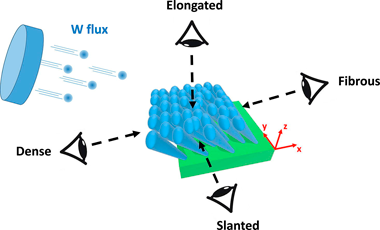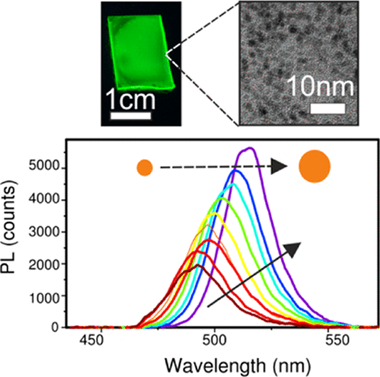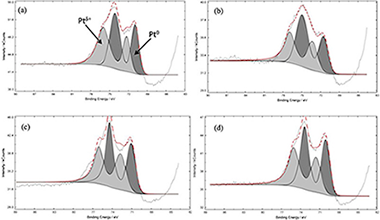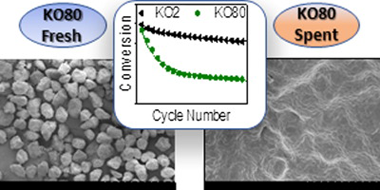Scientific Papers in SCI
2020
2020
Nanotecnología en Superficies y Plasma
In Vitro and In Vivo Study of Titanium Grade IV and Titanium Grade V Implants with Different Surface Treatments
Diaz-Sanchez, RM; de-Paz-Carrion, A; Serrera-Figallo, MA; Torres-Lagares, D; Barranco, A; Leon-Ramos, JR; Gutierrez-Perez, JLMetals, 10 (2020) 449
Show abstract ▽
The aim of our study is to evaluate different implant surface treatments using TiIV and TiV in in vitro and in vivo studies. An in vitro study was established comprising four study groups with treated and untreated TiIV titanium discs (TiIVT and TiIVNT) and treated and untreated TiV titanium discs (TiVT and TiVNT). The surface treatment consisted in a grit blasting treatment with alumina and double acid passivation to modify surface roughness. The surface chemical composition and the surface microstructure of the samples were analyzed. The titanium discs were subjected to cell cultures to determine cell adhesion and proliferation of osteoblasts on them. The in vivo study was carried out on the tibia of three New Zealand rabbits in which 18 implants divided into three experimental groups were placed (TiIVT, TiIVNT, and TiVT). Micro-computed tomography (micro-CT) was performed to determine bone density around the implants. The results showed that cell culture had minor adhesion and cell proliferation in TiIVT and TiVT within the first 6 and 24 h. However, no differences were found after 48 h. No statistically significant differences were found in the in vivo micro-CT and histological study; however, there was a positive trend in bone formation in the groups with a treated surface. Conclusions: All groups showed a similar response to in vitro cell proliferation cultures after 48 h. No statistically significant differences were found in the in vivo micro-CT and histological study
April, 2020 | DOI: 10.3390/met10040449
Nanotecnología en Superficies y Plasma
A 4-view imaging to reveal microstructural differences in obliquely sputter-deposited tungsten films
El Beainou, R; Garcia-Valenzuela, A; Raschetti, M; Cote, JM; Alvarez, R; Palmero, A; Potin, V; Martin, NMaterials Letters, 264 (2020) 127381
Show abstract ▽

We report on the morphological disparity of the columnar growth in W thin films sputter-deposited by oblique angle deposition. Oriented tungsten thin films (400 +/- 50 nm thick) are prepared using a tilt angle alpha of 80 degrees and a sputtering pressure of 0.25 Pa. Inclined columns (beta = 38 +/- 2 degrees) are produced and the microstructure is observed by scanning electron microscopy. A 4-view imaging is performed in order to show inhomogeneous growing evolutions in the columns. Morphological features vs. viewing direction are also investigated from a growth simulation of these tilted W columns. Experimental and theoretical approaches are successfully compared and allow understanding how the direction of the W particle flux leads to dense or fibrous morphologies, as the column apexes are in front of the flux or in the shadowing zone.
April, 2020 | DOI: 10.1016/j.matlet.2020.127381
Materiales Ópticos Multifuncionales
Monitoring, Modeling, and Optimization of Lead Halide Perovskite Nanocrystal Growth within Porous Matrices
Tiede, DO; Rubino, A; Calvo, ME; Galisteo-Lopez, JF; Miguez, HJournal of Physical Chemistry C, 124 (2020) 8041-8046
Show abstract ▽

The growth of lead halide perovskites within metal-oxide nanoporous films has been recently considered as a means to obtain chemically and photostable ligand-free high-quality nanocrystals (NCs). The growth process, governed by the reactions taking place in nanoreactors dictated by the matrix pore size, has not been explored so far. In this work, we use photoluminescence as a tool to monitor the growth of perovskite NCs within the void network of an optically transparent matrix. We consider the effect of different external factors, such as temperature, light illumination, or precursor concentration, on the growth dynamics, and discuss a possible formation mechanism of the confined perovskite NCs. Based on this analysis, guidelines that could serve to improve the fabrication and optoelectronic quality of this type of NCs are also proposed.
April, 2020 | DOI: 10.1021/acs.jpcc.0c01750
Fotocatálisis Heterogénea: Aplicaciones
Pt–TiO2–Nb2O5 heterojunction as effective photocatalyst for the degradation of diclofenac and ketoprofen
Sacco, O.l; Murcia, J.J.; Lara, A.E.; Hernández-Laverde, M.; Rojas, H.; Navío, J.A.; Hidalgo, M.C.; Vaiano, V.Materials Science in Semiconductor Processing, 107 (2020) 104839
Show abstract ▽

Pt–TiO2–Nb2O5 heterojunction was synthetized and studied for the photocatalytic removal of diclofenac (DCF) and ketoprofen (KTF) under UV light irradiation. The physical-chemical properties of the prepared catalysts were analysed by different characterization techniques revealing that the lowest platinum nanoparticle size and the better metal distribution was observed in Pt–TiO2–Nb2O5 sample. The Pt–TiO2–Nb2O5 heterojunction possessed the best photocatalytic activity toward both the photodegradation and mineralization of the two selected pollutants. The optimal photocatalyst showed a DCF and KTF mineralization rate of 0.0555 and 0.0746 min−1, respectively, which were higher than those of Pt–TiO2 (0.0321 min−1 for DCF and 0.0597 min−1 for KTF). The experiments driven to analyse the effects of free radical capture showed that ·OH, ·O2− and h+ have a primary role in reactive during the photocatalytic reaction. The improved photocatalytic performances of the Pt–TiO2–Nb2O5 heterojunction could be argue by a direct Z-scheme mechanism in which the Pt0 nanoparticles could act as a bridge between TiO2 and Nb2O5, improving the electron-hole separation and, ultimately, enhancing the photocatalytic removal rate of both DCF and KTF.
March, 2020 | DOI: 10.1016/j.mssp.2019.104839
Reactividad de Sólidos
Role of particle size on the multicycle calcium looping activity of limestone for thermochemical energy storage
Duran-Martin, JD; Jimenez, PES; Valverde, JM; Perejon, A; Arcenegui-Troya, J; Trinanes, PG; Maqueda, LAPJournal of Advanced Research, 22 (2020) 67-76
Show abstract ▽

The calcium looping process, based on the reversible reaction between CaCO3 and CaO, is recently attracting a great deal of interest as a promising thermochemical energy storage system to be integrated in Concentrated Solar Power plants (CaL-CSP). The main drawbacks of the system are the incomplete conversion of CaO and its sintering-induced deactivation. In this work, the influence of particle size in these deactivation mechanisms has been assessed by performing experimental multicycle tests using standard limestone particles of well-defined and narrow particle size distributions. The results indicate that CaO multicycle conversion benefits from the use of small particles mainly when the calcination is carried out in helium at low temperature. Yet, the enhancement is only significant for particles below 15 μm. On the other hand, the strong sintering induced by calcining in CO2 at high temperatures makes particle size much less relevant for the multicycle performance. Finally, SEM imaging reveals that the mechanism responsible for the loss of activity is mainly pore-plugging when calcination is performed in helium, whereas extensive loss of surface area due to sintering is responsible for the deactivation when calcination is carried out in CO2 at high temperature.
March, 2020 | DOI: 10.1016/j.jare.2019.10.008
- ‹ previous
- 102 of 410
- next ›














